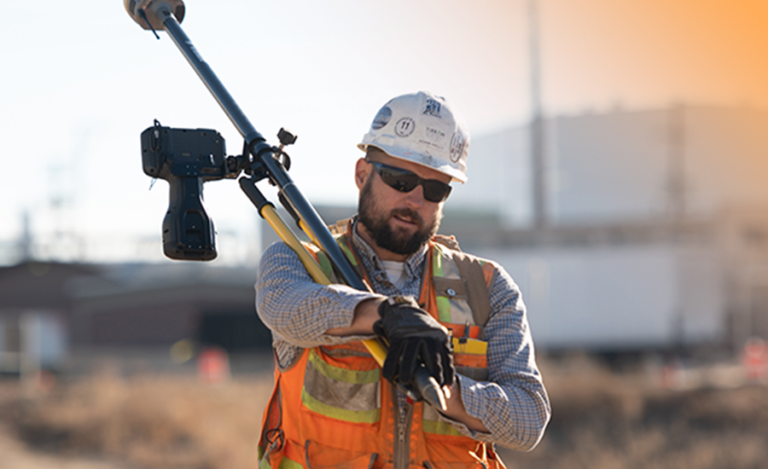
Today’s construction industry is at an interesting time with a landscape that seems almost untouched by technology in any area, like never before. The industry is not only changing and evolving in some, but ALL areas simultaneously. For an industry known as a bastion of stable habits and resistant to change, the technological revolution has finally reached one of the last places to embrace it. Conditions are ripe for technology to modernize the construction landscape, and it doesn’t take a keen observer to realize how much technology has already permeated the landscape. For example, consider the current list of acronyms and buzzwords: BIM, GIS, RTK, GNSS, DPD, AR/VR, etc. With so many, it’s hard to understand what is applicable to your situation and what isn’t.
So with so much technology out there, how do you know what to choose? For the most part, all technologies have their merits and weaknesses. After all, no technology developer for this industry can serve all stakeholders. Rather, much of the technology is more niche, focusing on smaller areas of improvement that are more manageable and leave room for others to contribute. Today’s technology is as diverse as the construction industry, so options abound for stakeholders to choose from when trying to revolutionize their part of the landscape.
In this article, we will share the perspective of three key decision points when evaluating the particular technology of Advanced Digital Construction Management Systems (ADCMS) and also discuss how the experience and needs of each end user they drive the framework for decision-making. particularly when it comes to integrations between technologies and the ability to leverage cross-training of skills and abilities in these technologies as a way to provide greater use of increasingly limited staff resources.
- Application, value and price. Know your needs first.
Consider for a moment the variety of costs associated with ADCMS systems. The range is as wide as the systems and the features that make them up. Many specialize only in vertical construction; many only in unit-based horizontal construction. Some do both, but others have been shown to be specifically designed for one, but flexible enough to be used for others. Therefore, understanding your needs, requirements and limitations should come first.
Take Appia from Infotech for example®Construction administration and inspection platform. Although it is designed for horizontal unit-based construction, its agility lies in its highly configurable nature that allows it to adapt to many different types of projects. With its unique ability to allocate, report and prioritize funding sources and funding packages by individual items, it can be leveraged across a variety of project types. Additionally, Appia can analyze data from multiple bids for a single project by loading from a single comma-separated file. In this case, it is only intended as a tool for engineers to use to streamline the analysis process. While that’s not its purpose, it still provides a simple tool that streamlines and saves time.
It is in these types of “out of the box” applications that provide the greatest value when viewed through a lens of totality. Therefore, price should be the last of the three considerations, as price alone has rarely been a good indicator of value or fit.
- The value of risk reduction.
An often overlooked and significantly undervalued benefit that using an ADCMS brings to the table is its inherent risk reduction. Stop for a moment and consider what the average construction claim is valued at. Then ask yourself, “How did it start?” And finally, consider the cost of insurance policies and the bond that covers the projects. Compared to the gross dollars spent collectively around legal instruments that are intended to change and control risk, ADCMS systems seem to do a much better job for the price.
For example, in a recent discussion with a customer using Appia® For their inspection documentation process, a project owner called to inquire about what appeared to be an overbill on an invoice. The ability to quickly search software-as-a-service to determine a late work day due to a mechanical breakdown during paving resulted in a resolution within 20 minutes. If they used a conventional paper process, the response could have taken days, increasing the days sales outstanding (DSO) for the particular AEC company.
Or how about a project that involved the contractor working hand-in-hand through ADCMS with inspectors and project owners when an unforeseen condition was discovered. The contractor, having adopted his own GPS machine controls, was able to share excavation information taken during removal and repair with the team. The inspection team was then able to accurately scope the repair from the planned design to the as-built design and pay the contractor for the additional work without any issues or delays.

